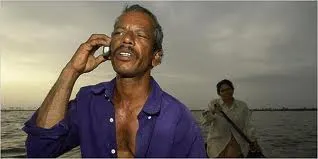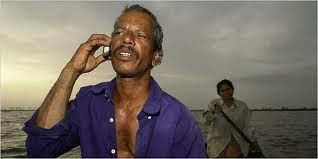Mobile Innovations that are Changing India and the World
A few quick stats:
- WHO/UNICEF Joint Monitoring Programme (JMP) for Water Supply and Sanitation (2012) report: 780 million people lack access to an improved water source
- Over 5.6 billion in the world have a mobile subscription with China contributing a billion to that number and India trailing right behind

These numbers clearly indicate the deep penetration of mobile phone subscription in the world today. What’s interesting is that several social enterprises understanding this extent of mobile penetration have innovated on mobile phones to create social impact. Over the last few months, YourStory.in has been tracking many of these social enterprises. Here’s a quick overview of some of these companies that have introduced mobile innovations for social impact:m.Paani:
m.Paani designs and implements mobile-based loyalty programs that help communities living at the bottom of the pyramid get the most out of their spend. Users of the m.Paani platform earn points for their mobile phone usage or expenditure on select FMCG products that can be monetized for products and services – such as safe water, education, energy and healthcare – which will improve their lives.
Read more mPaani.
Nano Ganesh:
Nano Ganesh is a mobile installation by Ossian that allows farmers to switch on and switch off their motors remotely. They avoid almost 7kms journey every day travelling to the fields to switch on and switch off the water supply to the fields using this mobile based remote control. Read more on Nano Ganesh.
ZMQ Technologies/ZMQ Development
ZMQ has developed a mobile based platform for Micro-Finance Institutions (MFIs). What’s interesting about ZMQ Technologies/ZMQ Development is their idea to introduce games on this platform for MFIs leveraging their social gaming expertise. ZMQ has a portfolio of over 130 social games on different social issues as a development sector tool.
Read more on ZMQ Technologies.
Classle:
As a social learning network, Classle has a two sided model. One side has individual student users while the other side has customers who are potential employers of these students. Currently, Classle has over 2,00,000 registered users in little over 100 partner colleges in their network. Colleges make adjustments on their timetable to offer Classle hour to the students.
Read more on Classle.
mDhil:
mDhil services initially began as an SMS based health information service that was available through mobile service providers targeting people between 17 to 25 years of age in tier I & tier II cities as this group is the early adopter of mobile and web technology. Sexual health is also a huge topic in this age group and so is women’s health. These are some of the tabooed topics and are not often discussed in the open. Hence the focus has been on this group.
Read more on mDhil.
Dimagi:
CommCare (mobile-cloud based platform developed by Dimagi as early as 2002) is image heavy and provides questions as voice cues to educate pregnant women. The women in turn answer those questions which are then recorded in the same device. This information is later fed into the computer to collate the data on all the pregnant women in every village with specific details regarding each of those pregnant women. This data further helps them provide the necessary health care to those women. The usage of text is minimal since the platform is primarily used by low literate population in the country.
Read more on Dimagi.
E Health Point Service:
E Health Point Services use ICT for 3 components. Firstly, the enterprise engages the patient and doctor through tele-medical conversations by video conferencing. Secondly, they employ advanced diagnostic tools which are also online. Third and recent addition is their mobile based diagnostics. Their health coordinators carry handheld tablets and phones to test clients and get advice from doctors in real time. Patients have a clinic in the rural areas and can get connected with doctors in urban area. The mobile diagnostics include mother and child care health services and diabetes and hypertension diagnostic services.
Read more on E Health Point Service.






